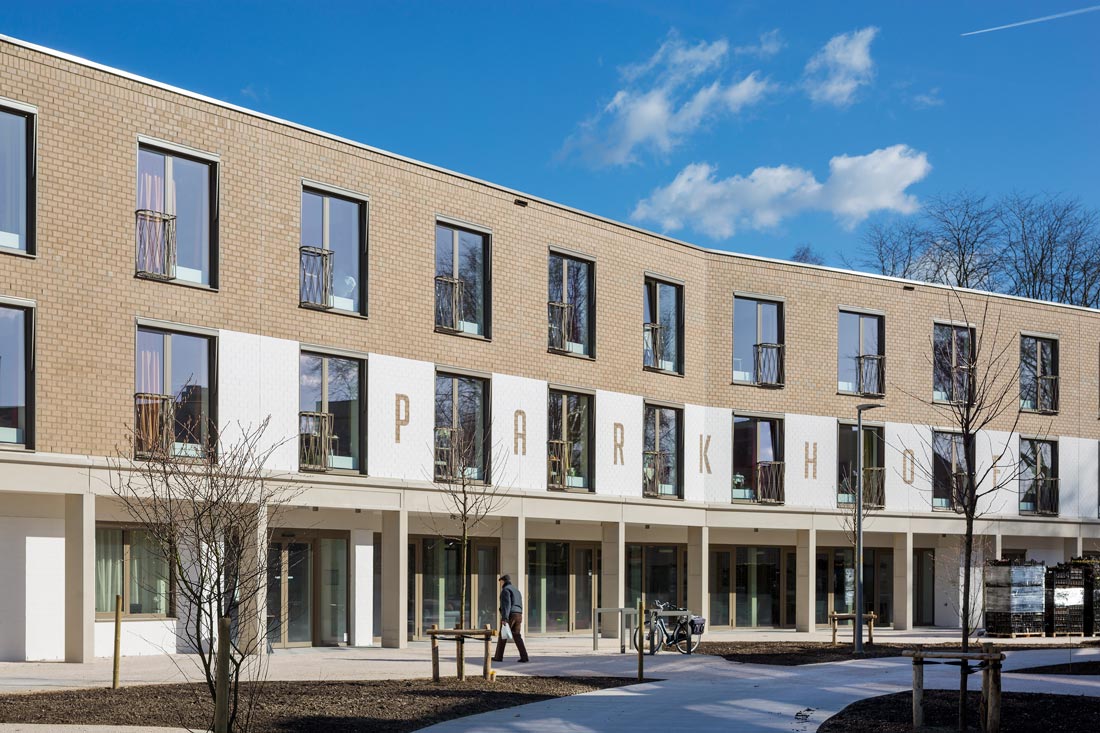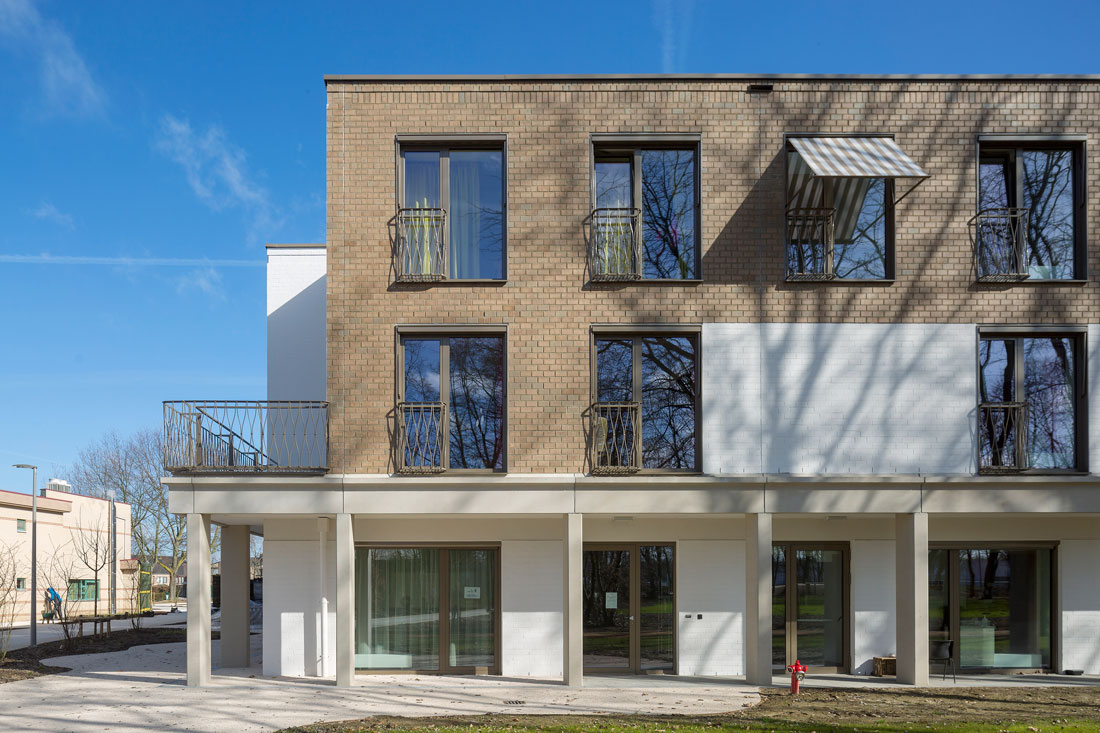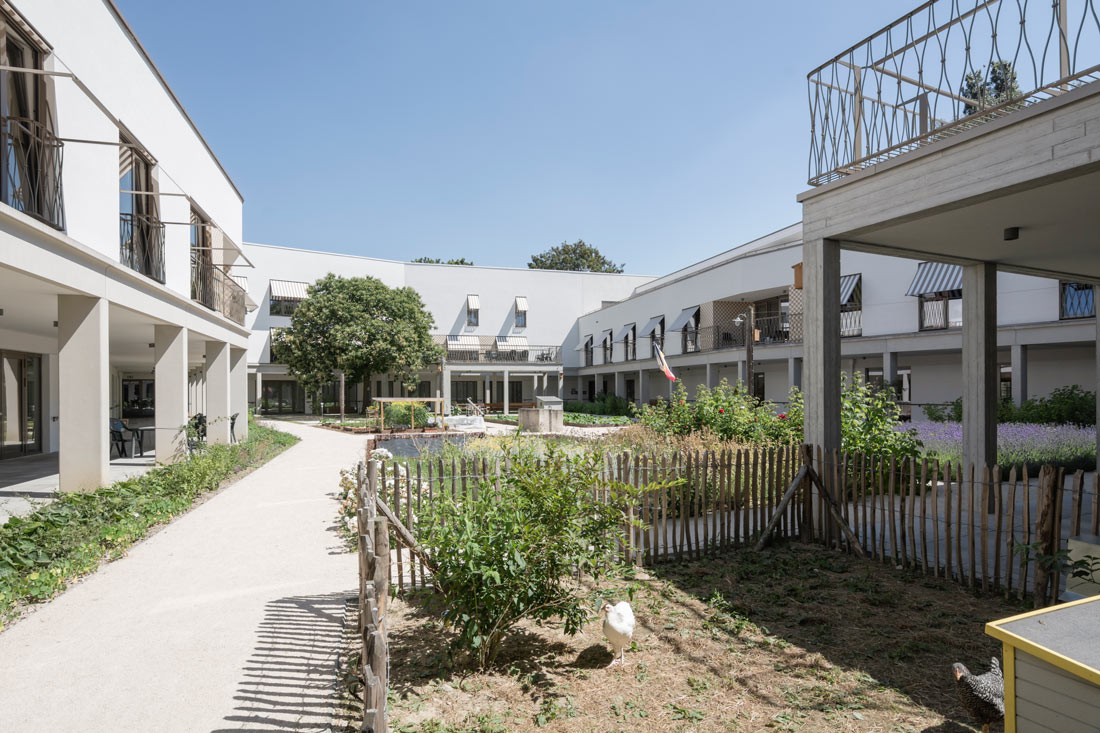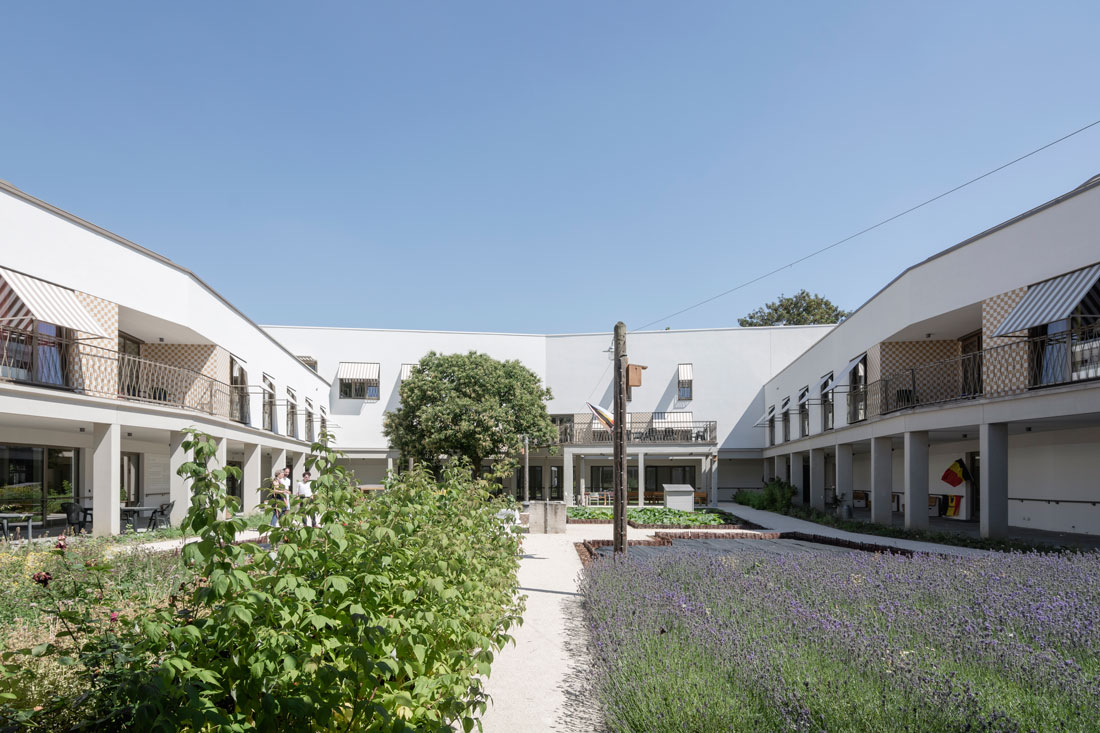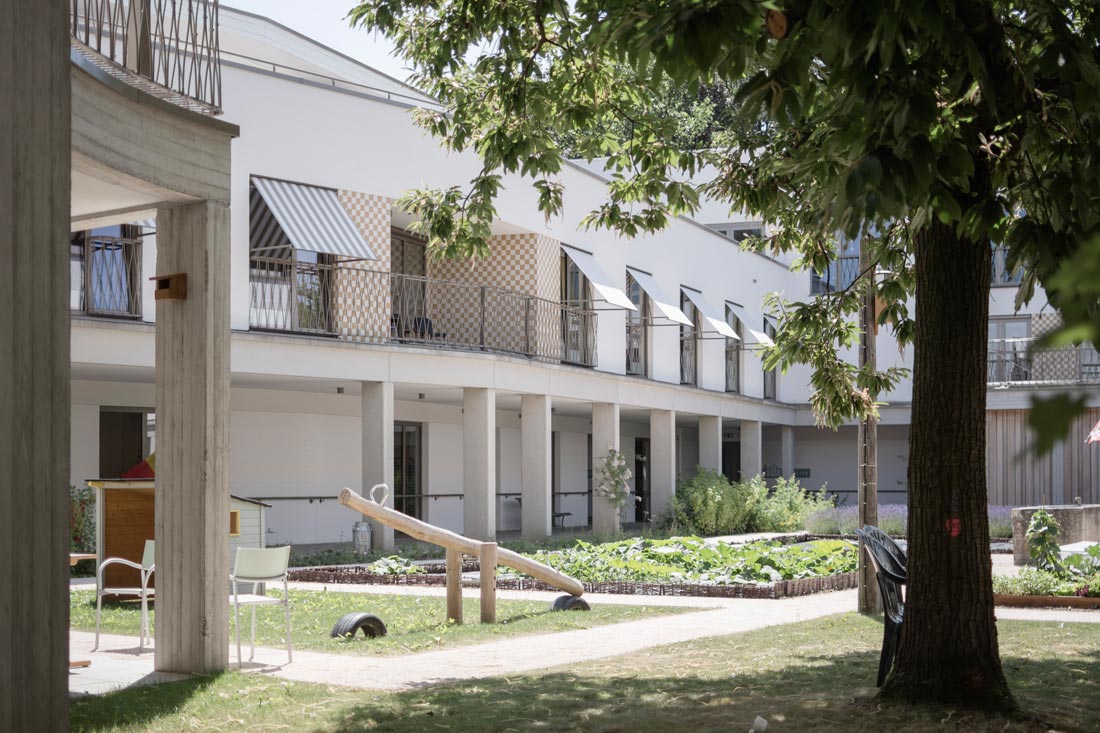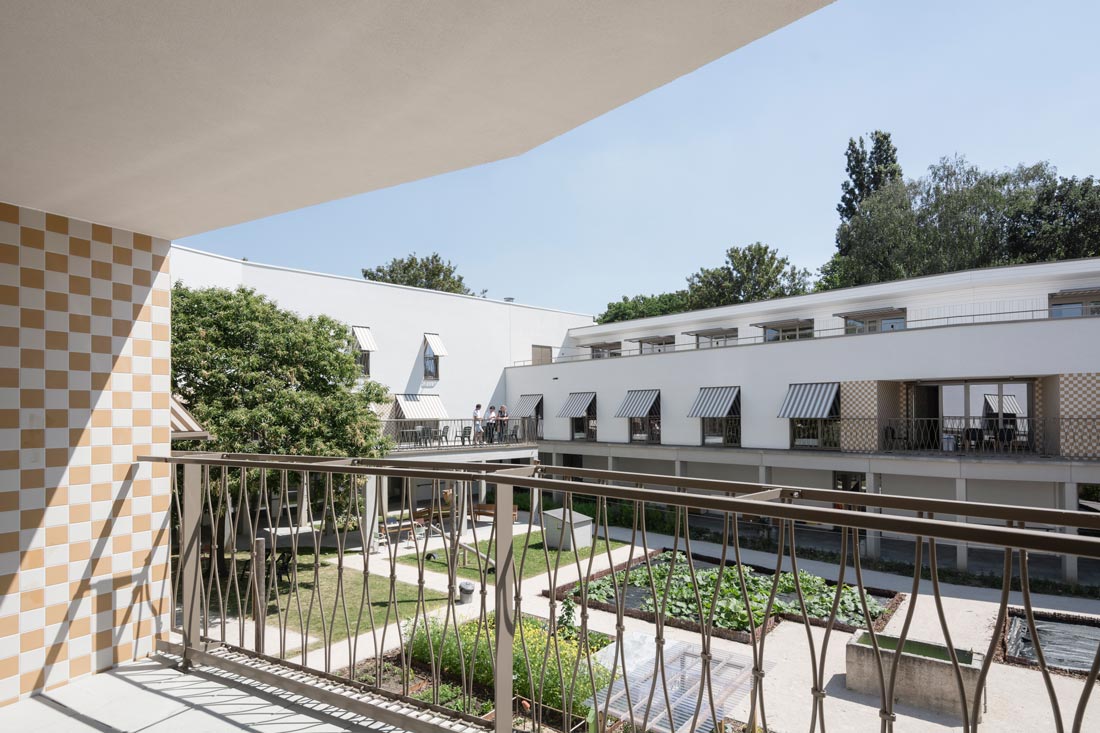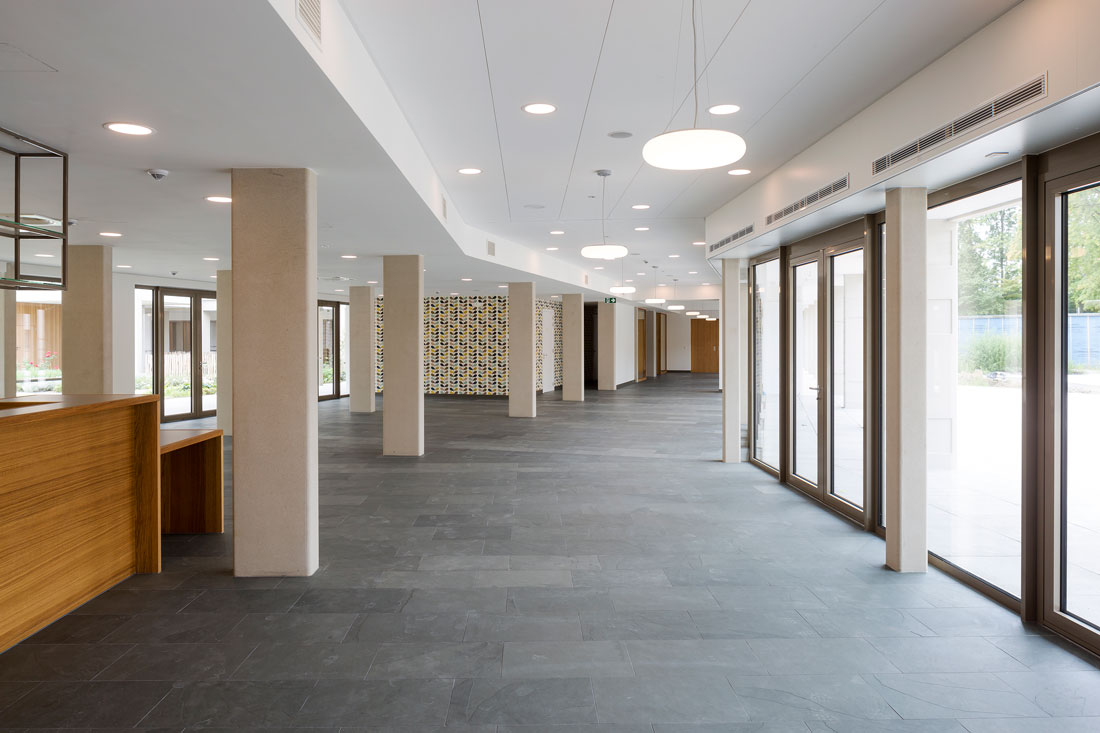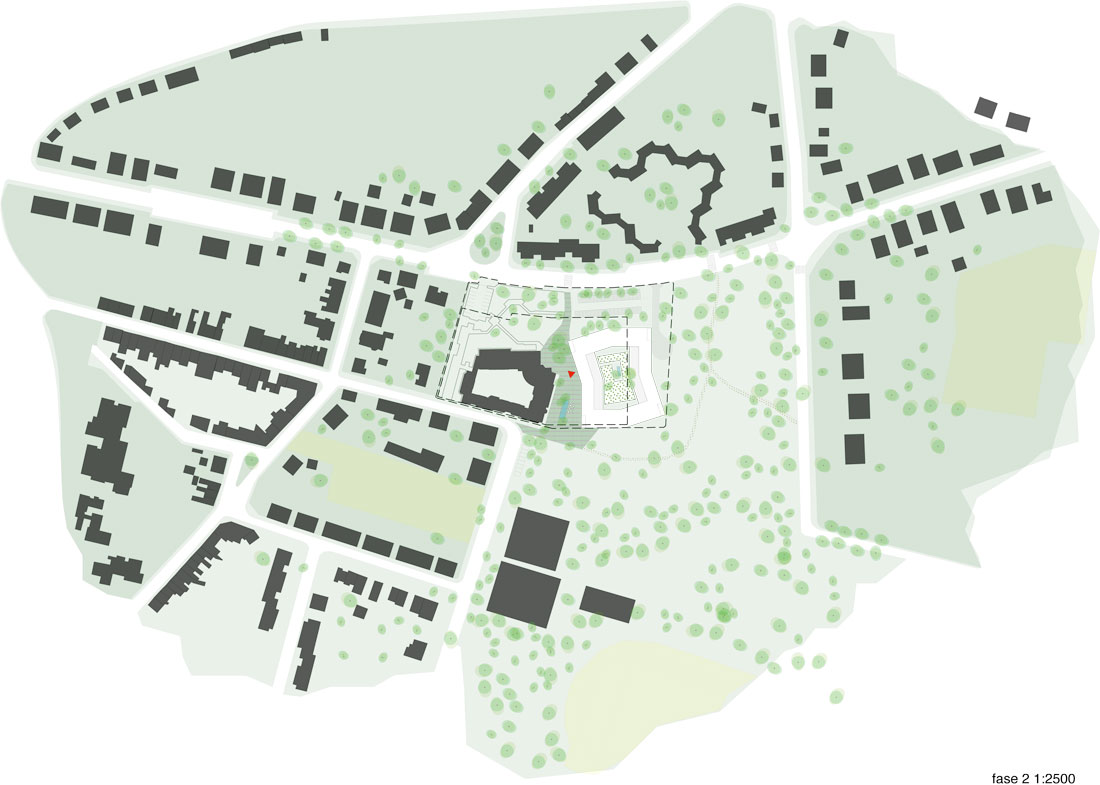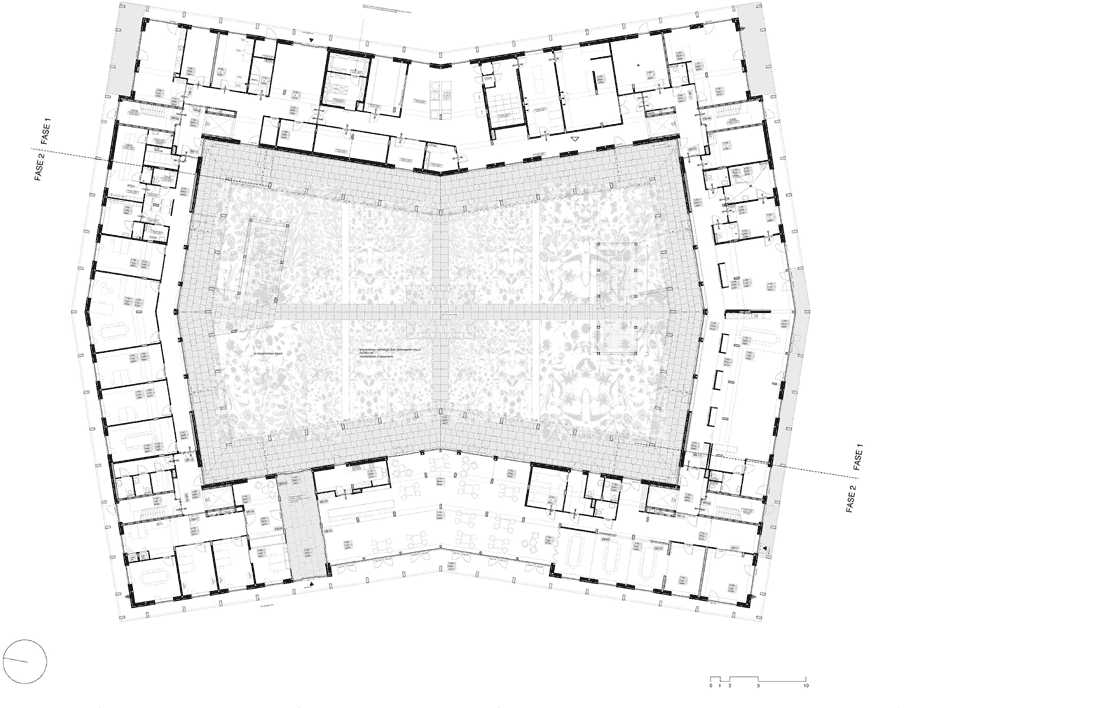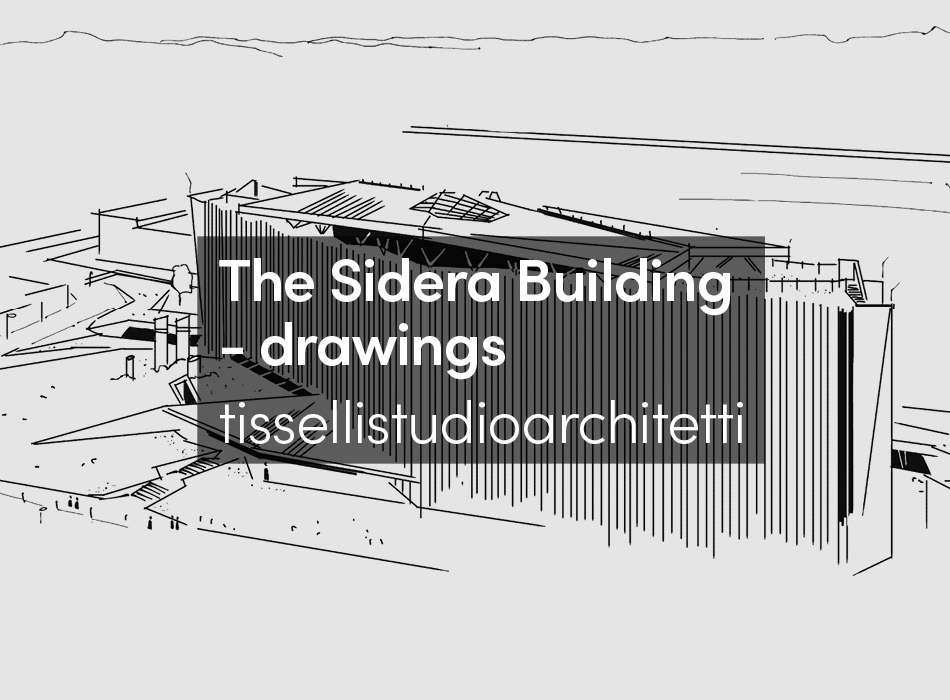The new building for the residential care center at Parkhof replaces an existing elderly home consisting of two parts, one from the 1960s and the other from the 1990s. Neither building meets present-day standards and expectations. The earlier building has been demolished. The more recent structure, the “Q-building”, will be refurbished and used as an office building for the client, the social services agency of Machelen (OCMW).
The new care home for the elderly has been organized around a spacious courtyard. This courtyard is surrounded by a wide, covered gallery referring to the cloisters of medieval monasteries. Both garden and gallery create an important living space for the residents. The specific layout of the garden and the landscaping hold both a recreational and therapeutic significance.
From the main entrance, one overlooks the inner garden. The front doors to the living units are situated in the corners of the gallery surrounding the garden. Four “real” front doors lead to the residential first and second floors.
On the ground floor, all public spaces and the day center are organized around the courtyard. The offices and the large kitchen face towards the outside to provide a pleasant working environment for all staff, with generous views over the surrounding parkland.
The service center is located next to the main entrance and consists of several multipurpose rooms that can be subdivided. The cafeteria is connected to the dorpsplein, or village square. We interpreted this demand stipulated in the program of requirements literally: we created a new public square with a terrace open to all visitors to the village park.
The layout, programming and planting of the enclosed garden has been treated as an applied artwork and was developed in collaboration with the artist Rudy Luijters and the landscape architect Arne Deruyter. The planting refers to the traditional utilitarian gardens of the region. Specifically, designated plots will be cared for as allotment gardens by residents of the neighborhood. The unconventional approach helps us to create a rich, healthy and natural living environment for its sensitive inhabitants – a true “healing environment” in the holistic sense, combining natural, social and spatial qualities.
The 105 rooms in total are subdivided into smaller living groups consisting of 15 inhabitants each. On the first floor, 60 rooms are divided among four “houses”. Each house is directly accessible from the outside via elevators installed in the four corners. The corridors are short and wide and have views to the outside. Each house has a service core and an access core, a spacious dining room and a lounge with a balcony overlooking the courtyard, and a more private living room and lounge with a balcony overlooking the park. The residents on the first floor can easily use the public outside areas and facilities on the ground floor. The first floor is functionally self-sufficient but benefits from easy access to supplementary recreational spaces on the ground floor.
The second floor houses 45 rooms and has been conceived for inhabitants suffering from dementia. The division of units into the various houses is flexible here, and the layout allows for a multitude of different clustering opportunities. The various public spaces on this floor are suitable for different uses. The large terraces contribute to a complete, versatile living environment and compensate for the distance from the garden.





